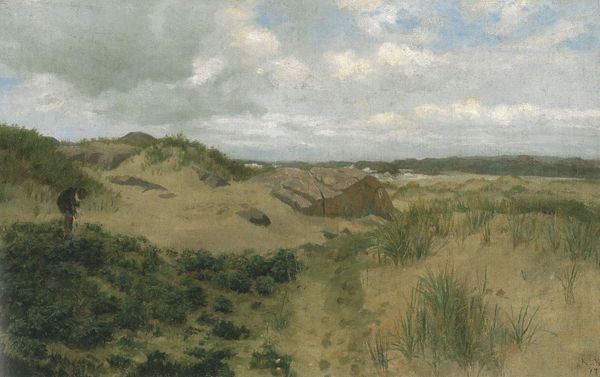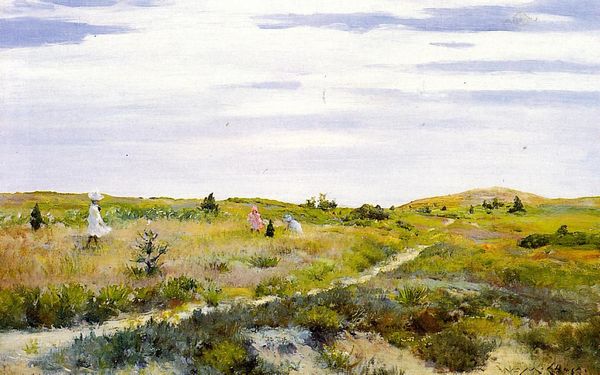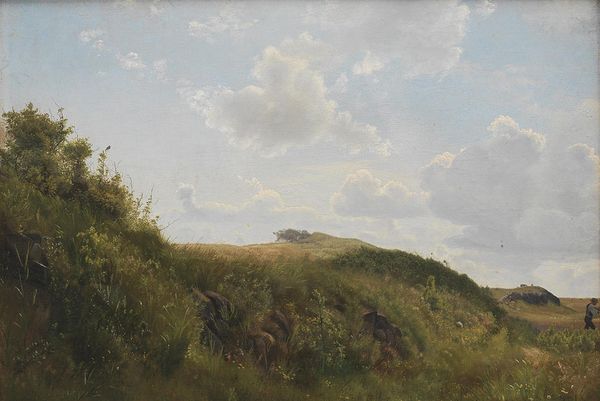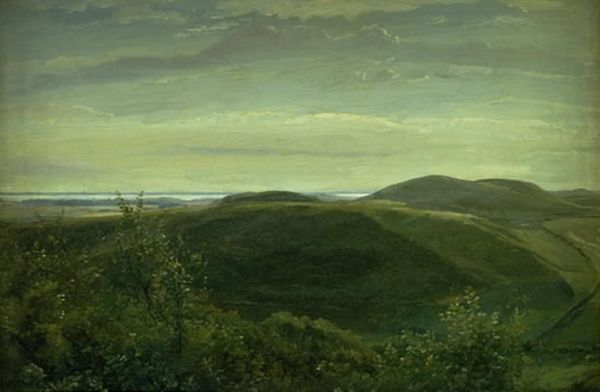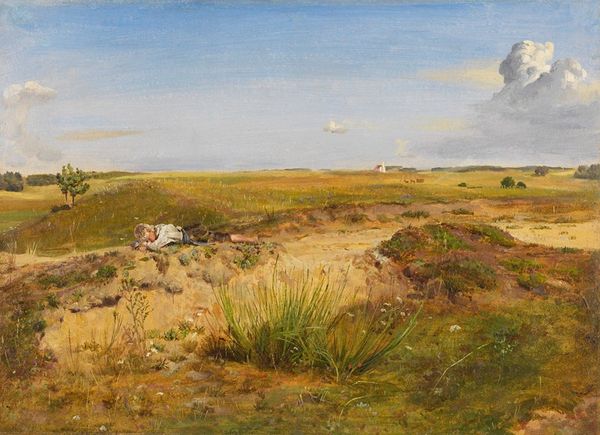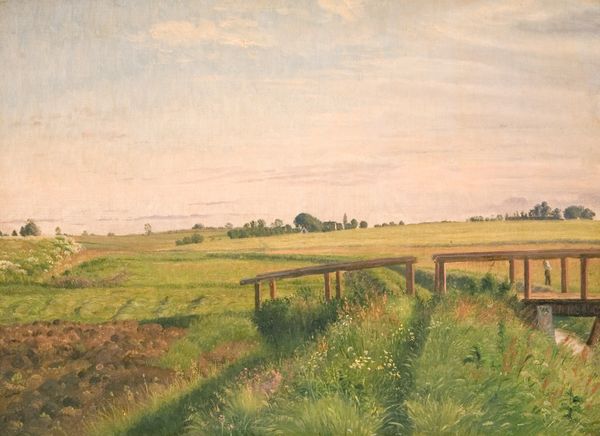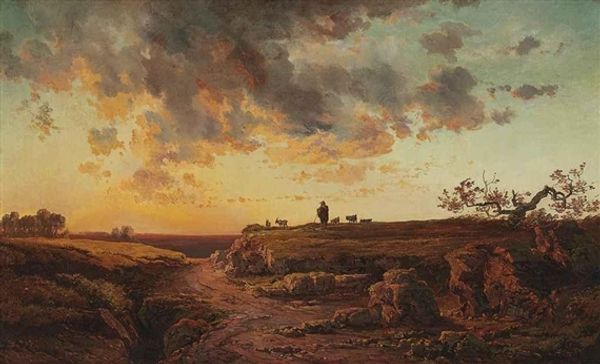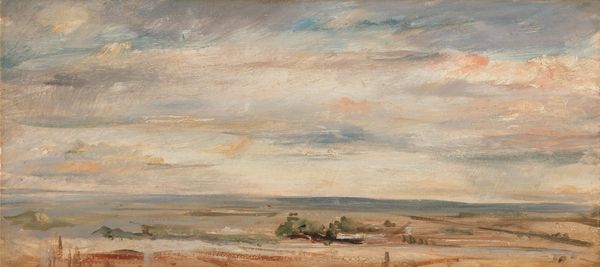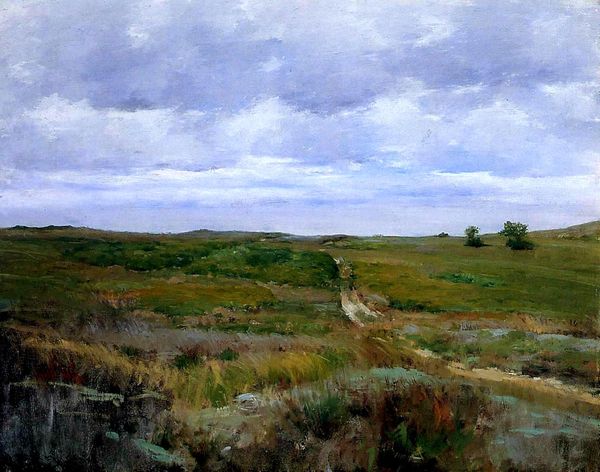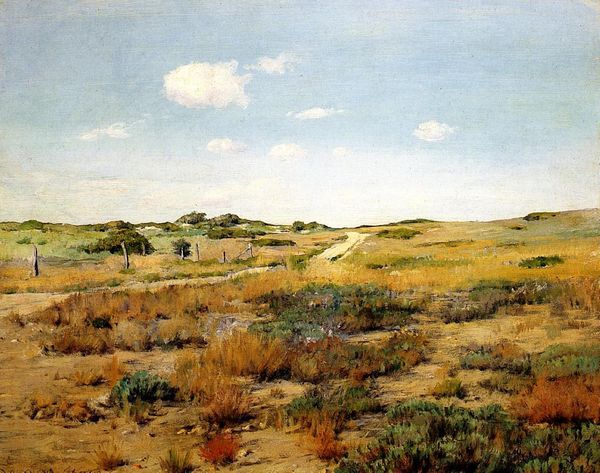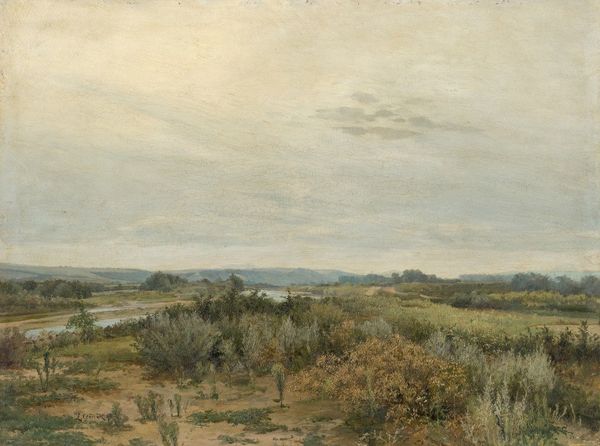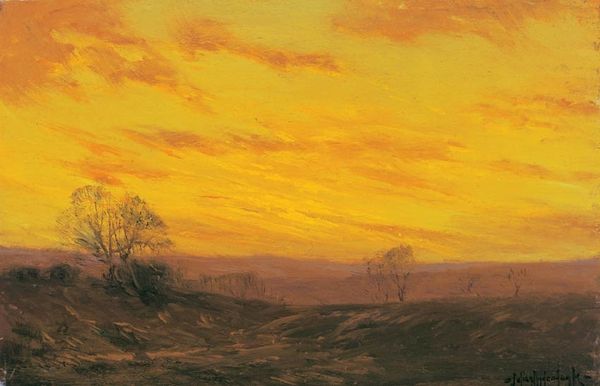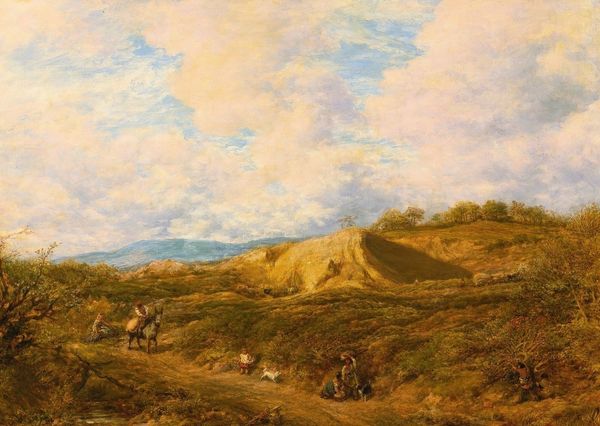
painting, plein-air, oil-paint
#
tree
#
sky
#
painting
#
atmospheric-phenomenon
#
impressionism
#
plein-air
#
oil-paint
#
landscape
#
impressionist landscape
#
figuration
#
nature
#
oil painting
#
geometric
#
romanticism
#
natural-landscape
#
naturalism
#
realism
Copyright: Public domain
Curator: I find it remarkably peaceful, that gradient of color across the sky…almost a complete absence of anything emphatic. Editor: Exactly! The canvas offers a compelling study in quietude. This is Theodor Philipsen’s “Jutlandic Heath Landscape,” executed in oil paint, very much in the plein-air tradition. Note how the composition leads the eye from the foreground’s textured earth to the diffuse light of the horizon. Curator: What’s especially evocative is the suggestion of that rutted path; its ochre tones draw my eye centrally and it feels grounded in materiality, even in its indistinct state. Did Philipsen return to this location or study similar ones repeatedly? Editor: His commitment to documenting the landscape and the lives of the people who worked within it speaks volumes about the role of labour in creating not just artistic depictions, but the land itself. Philipsen would carefully consider how changing agricultural methods altered his surroundings. Curator: An excellent point! But structurally, it's the distribution of masses which captivates—the heavier concentration of the land formations anchors the lighter expanse of the sky and atmospheric phenomena, creating a serene balance. There is an emotional resonance I am responding to. Editor: And this tension reflects how rural industry shaped and depended on its surroundings. Even the sky can be understood as revealing the influence of weather upon productivity! This makes me curious about how he prepared his paints, what tools he used, and the environmental circumstances in which he was making this image. Curator: A focus on materials inevitably moves into a discussion of color theory, then: examine how Philipsen manipulates light with this restricted palette to enhance the textural differences. It’s almost impressionistic, don't you think? Editor: Perhaps. It speaks to a moment, that much is true. However, let’s not neglect the real, hard conditions and the rural subjects that give meaning to that light and to the objects it reveals, because Philipsen clearly did not. Curator: Ultimately, Philipsen's artwork embodies the calm, resolute observation that can yield deep appreciation of what one actually sees—regardless of context. Editor: And that careful seeing demands that we reckon with the conditions, human and natural, that made that viewpoint, and thus this art, possible. Thank you.
Comments
No comments
Be the first to comment and join the conversation on the ultimate creative platform.
